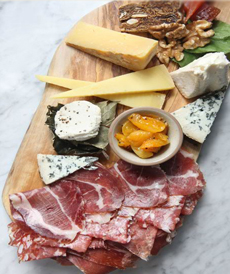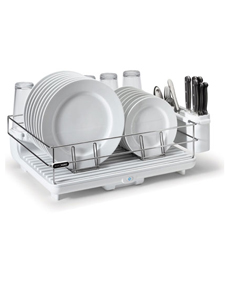| Thanksgiving celebrates the season’s bounty. In addition to an elaborate dinner, there’s often a generous amount of pre-dinner munchies: cheese, dips, spreads and more.
While they’re all delicious, they can fill up guests so that by the time they sit down at the table, the edge is off the appetite. Some people may have even filled up on the pre-dinner goodies.
One way to make sure that everyone has room for the turkey, stuffing, yams and pumpkin pie, is to pass the hors d’oeuvre, crudité platters, cheeses, etc., instead of setting platters in the middle of seating and conversation areas.
You can enlist older children to circulate with trays, with a reward of 10 iTunes songs as their tip to ensure good service. They can enjoy playing cater-waiter and coming up with the most engaging ways to say, “Ladies, may I offer you some spinach dip?”
Your guests will thank you. |
|

Don’t fill your guests up before
dinner begins. Photo courtesy Artisanal Fromagerie & Bistro, NYC. |






